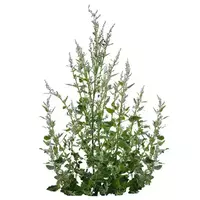Garden swan

Did you know that the Atriplex plant, which belongs to the Marev family, has long been eaten by the inhabitants of our latitudes. This is due, first of all, to the fact that swan grows everywhere in the territory of both the Russian Federation itself and neighboring states. Therefore, it is not at all surprising that the swan at some point began to enter the daily diet of residents of some Slavic lands. Botanists have now studied and described more than 250 species of swan.
The plant is capable of growing in temperate and tropical climates. Therefore, a swan can be found both in Europe and in Australia or the USA, for example. The swan got its original name thanks to the Latin word "albus, " which means white. The thing is that the swan is distinguished by the characteristic color of the leaves. white spots on the swan foliage gave impetus to the fact that the plant began to be called "swan. " The name eventually transformed into a swan. Lebeda refers to artisanal and weed plants.
However, this does not in any way diminish the beneficial properties of swans that humans have been using for millennia. Only a few species of swan are eaten. For example, a garden swan or Atriplex hortensis. We think many have heard that it was the distinctive properties of the swan that helped people survive the hungry time any time. The facts are known when the basis of the human diet for a long time was exclusively swan.
The famous Russian writer and classic of world literature L. N. Tolstoy, describing the famine of 1984, wrote that people escaped with bread made from swans. Usually, green leaves of a garden swan are used for food. The plant is perfect for making salads, first courses, as well as side dishes. It is worth noting that garden swan can surpass some animal products in its nutritional abilities.
This is due primarily to the fact that in the chemical composition of swans contains just a huge amount of protein of natural origin. Garden swan leaves can be more than just an original addition to your culinary masterpieces. the plant is rightfully called a treasure trove of vitamins, minerals, as well as other naturally useful natural compounds for the human body. Garden swan is used not only in cooking.
The plant has long been considered a healing agent, which until now has been used as a medicine of folk medicine. Decoctions of leaves, as well as seeds, garden swans help with various disorders of the digestive system. In addition, swan is considered an excellent laxative and antibacterial agent that helps with food poisoning, as well as in the event of infections in the human gastrointestinal tract.
garden swans 368 kCal
The energy value of garden swans (Ratio of proteins, fats, carbohydrates - ju):
Proteins: 14.12 (~ 56 kCal)
Fats: 6.07 (~ 55 kCal)
Carbohydrates: 64.16 (~ 257 kCal)
Energy ratio (bj | y): 15% | 15% | 70%
 Español
Español Français
Français Português
Português Русский
Русский 简体中文
简体中文 繁體中文
繁體中文 日本語
日本語 한국어
한국어 العربية
العربية Türkçe
Türkçe Қазақ
Қазақ Deutsch
Deutsch Italiano
Italiano Українська
Українська
